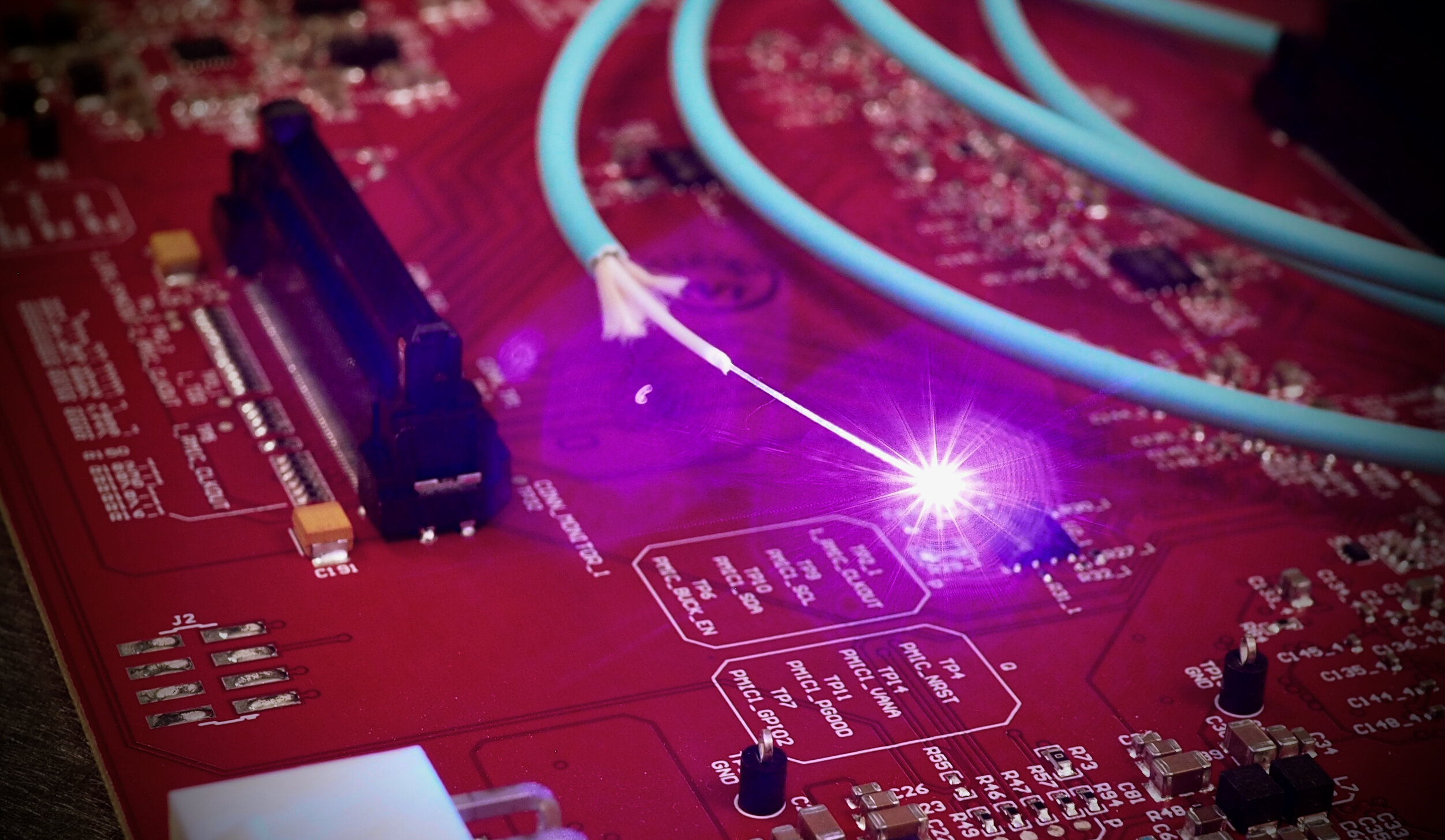博文
科学家们利用头发般细的光纤中的光进行计算
||
科学家们利用头发般细的光纤中的光进行计算
诸平
据英国赫瑞瓦特大学(Heriot-Watt University, Edinburgh, UK)2024年1月19日提供的消息,赫瑞瓦特大学梅于尔·马利克(Mehul Malik)教授,和他在赫瑞瓦特大学超越二进制量子信息实验室(Beyond Binary Quantum Information Lab at Heriot-Watt University)的研究小组以及来自瑞典隆德大学(Lund University in Sweden)、意大利罗马萨皮恩扎大学(Sapienza University of Rome in Italy)和荷兰特温特大学(University of Twente in The Netherlands)等机构的合作学者,发现了一种强大的新方法,可以对光学电路进行编程,这对于不可破解的通信网络和超高速量子计算机等未来技术的实现至关重要。研究人员利用头发般细的光纤中的光进行计算(Scientists compute with light inside hair-thin optical fiber),相关研究结果于2024年1月19日已经在《自然物理》(Nature Physics)杂志网站发表——Suraj Goel, Saroch Leedumrongwatthanakun, Natalia Herrera Valencia, Will McCutcheon, Armin Tavakoli, Claudio Conti, Pepijn W. H. Pinkse, Mehul Malik. Inverse design of high-dimensional quantum optical circuits in a complex medium. Nature Physics, 2024. DOI: 10.1038/s41567-023-02319-6. Published: 19 January 2024. https://www.nature.com/articles/s41567-023-02319-6
赫瑞瓦特大学工程与物理科学学院(Heriot-Watt’s School of Engineering and Physical Sciences)的实验物理学家兼物理学教授梅于尔·马利克(Professor Mehul Malik)解释说:“光可以携带大量信息,用光而不是用电进行计算的光学电路被视为计算技术的下一个重大飞跃。”
“但随着光学电路变得越来越大,越来越复杂,它们更难控制和制造,这可能会影响它们的性能。我们的研究展示了一种替代的、更通用的设计光学电路的方法,使用的是自然界中自然发生的过程。”
梅于尔·马利克教授和他的团队使用商用光纤进行了他们的研究,这种光纤在世界各地被广泛用于将互联网传输到我们的家庭和企业。这些纤维比人类头发的宽度还细,利用光来传输数据。通过利用光在光纤中的自然散射行为,他们发现他们可以以非常精确的方式对光纤内的光电路进行编程。超越二进制量子信息实验室( Beyond Binary Quantum Information Lab简称BBQLab)成员见上述图2(Fig. 2)。
梅于尔·马利克教授解释说:“当光进入光纤时,它会以复杂的方式散射和混合。通过了解这个复杂的过程,并精确地塑造进入光纤(optical fiber)的光,我们已经找到了一种方法,可以在这种混乱中精心设计光的电路。”
光学电路对未来量子技术的发展至关重要,量子技术是在微观层面上通过与光的单个原子或光子粒子一起工作而设计的。这些技术包括具有巨大处理能力的强大量子计算机(powerful quantum computers)和无法被黑客入侵的量子通信网络。
梅于尔·马利克教授解释说:“例如,量子通信网络的末端需要光学电路,这样信息才能在长距离传播后被测量。它们也是量子计算机的关键部分,用于对光粒子进行复杂的计算。”
量子计算机有望在药物开发、气候预测和太空探索等领域取得重大进展。机器学习即人工智能(artificial intelligence)是另一个使用光学电路快速处理大量数据的领域。
梅于尔·马利克教授说,光的力量在于它的多维度。他解释说:“我们可以在单个光粒子上编码很多信息,它的空间结构(spatial structure)、时间结构(temporal structure)以及其颜色。如果你能同时计算所有这些属性,就能释放出巨大的处理能力。”。
研究人员还展示了他们的可编程光学电路(programmable optical circuits)如何用于操纵量子纠缠(quantum entanglement),这是一种现象,当两个或两个以上的量子粒子,如光子,即使相隔很远也保持连接。纠缠在许多量子技术中发挥着重要作用,例如量子计算机内部的纠错和实现最安全类型的量子加密(quantum encryption)。
这项工作得到了QuantERA ERA-NET联合基金(QuantERA ERA-NET Co-fund: FWF Project I3773-N36)、英国工程与物理科学研究委员会{ UK Engineering and Physical Sciences Research Council简称EPSRC (EP/P024114/1)}、欧洲研究理事会{European Research Council简称ERC Starting grant PIQUaNT (950402)}、温纳格伦基金会(Wenner-Gren Foundation)、克努特和爱丽丝·瓦伦贝格基金会(Knut and Alice Wallenberg Foundation)通过瓦伦贝格量子技术中心(Wallenberg Centre for Quantum Technology简称WACQT)的资助。
上述介绍,仅供参考。欲了解更多信息,敬请注意浏览原文或者相关报道。
Programmable optical circuits are an important tool in developing quantum technologies such as transceivers for quantum communication and integrated photonic chips for quantum information processing. Maintaining precise control over every individual component becomes challenging at large scales, leading to a reduction in the quality of operations performed. In parallel, minor imperfections in circuit fabrication are amplified in this regime, dramatically inhibiting their performance. Here we use inverse design techniques to embed optical circuits in the higher-dimensional space of a large, ambient mode mixer such as a commercial multimode fibre. This approach allows us to forgo control over each individual circuit element, and retain a high degree of programmability. We use our circuits as quantum gates to manipulate high-dimensional spatial-mode entanglement in up to seven dimensions. Their programmability allows us to turn a multimode fibre into a generalized multioutcome measurement device, allowing us to both transport and certify entanglement within the transmission channel. With the support of numerical simulations, we show that our method is a scalable approach to obtaining high circuit fidelity with a low circuit depth by harnessing the resource of a high-dimensional mode mixer.
https://blog.sciencenet.cn/blog-212210-1419061.html
上一篇:HIV疫苗突破:创新研究中的抗体保护动物
下一篇:亨廷顿病的突破:科学家驯服了致命的生物诱因

